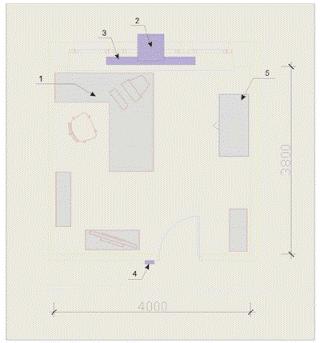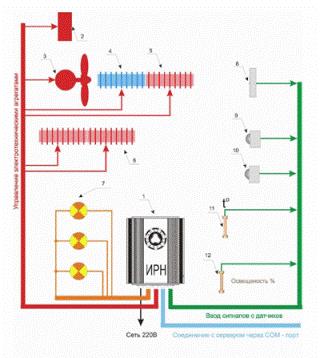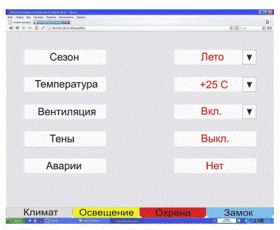Categories: Featured Articles » Sharing experience
Number of views: 365692
Comments on the article: 8
How I made a smart home with my own hands
I work in Convir as a system administrator and programmer. It so happened that our office, laboratory and production are located in different places. I am sitting, generally, on Preobrazhenka in a small room. But not far from home, and Internet communications are just excellent, with inexpensive traffic.
My side is sunny. Depending on the weather, it’s hot, then cold. I put the air conditioning in the window, and then during the heat I was not up to work. To make it cheaper, the air conditioner bought flowing (180 cu), at the same time, it ventilates the room, in contrast to the split system. I don’t open the windows now, there is less dust!
In general, everything is fine, only with this air conditioner is a hassle. He has no remote control. He is so simple. And it stands above and it’s inconvenient to climb to it. Again some kind of ambush. All these problems with climate and lighting are very distracting, and for me to focus is a big problem. I somehow began to think about it all the time. Well, I came up with it.
Our company is engaged in the manufacture of automation, including for the so-called. smart homes. Therefore, the “device” did not have to go to the side. And since you cannot ask for money from the authorities for all this, I did everything in a minimum, from the point of view of money, and, in a maximum, convenient for myself. My room is shown in fig. 1.

In general, everything is very simple. A workstation with a computer (1), air conditioning (2), an electric heater with two shadows (3), a code lock on the door (4), a server rack with communications (5). Well, there furniture, walls, lighting, in general, everything is simple ... The next task is to combine and automate all this more simply. With my idea, I introduced our director and received a free voltage regulator (IRN) and an adapter to the computer. All electrical systems are controlled from one IRN. A simplified wiring diagram is shown in Fig. 2.

FROMsmart cabinet node connection diagram
IRN (1) has nine keys for 220 volts. They control the operation of a door lock (2), an air conditioner fan (3), an air conditioner compressor drive (4), an air conditioner heater (5), an electric heater (6), three electric lamps (7), a common, table and spot along the walls.
Thus, I can: open the front door, ventilate the room, cool the air in the room, heat it and illuminate the room. Lighting involves 6 lighting schemes, plus, light level adjustment. IRN also makes the optimal on-off for incandescent lamps. All devices can be controlled manually or automatically.
For automation, the following sensors are connected to the inputs of the IRN input block: code, for an electronic key (8), motion, for signaling (9), fire, for firefighters (10), temperature (11) and illumination (12). IRN connects to the server through the COM port.
Some super expensive adapters are not needed for this. Additional software exchange is standard with us. My server runs on Linux (Gentoo). On it the Internet site and mail "hangs". Naturally, the IP address and access are permanent. The system is tied to the sql database and the “apache” web server, this was already installed for the site for me. The work is logged in the sql-system, and is controlled and monitored through the web-interface. I spent two days setting up the system and writing a “site”.
As a management console, you can use a work computer on the table, a mobile phone with a browser, or any remote computer. The whole system controls the climate, lighting, fire and security alarm, combination lock. An example in the browser is shown in fig. 3.

If you need to reconfigure something, I use the computer on the spot. When an emergency situation occurs (plus the IRN guard, it tracks accidents in the system itself, for example, a burned out light bulb or malfunctions in shadows), the server sends me an SMS on my mobile.
I can see what is happening remotely. I also have a web camera connected to the server there.
There is an energy saving mode. When I am not in the workplace, heat and air conditioning almost do not work. The temperature and light sensors I have left from some project, along with a card on the door and an electronic lock. But I had to buy a motion sensor, “hit” 485 rubles. So, what happened is not completely free :-).
That's basically it...
Vadim Yezhov
See also at i.electricianexp.com
:
